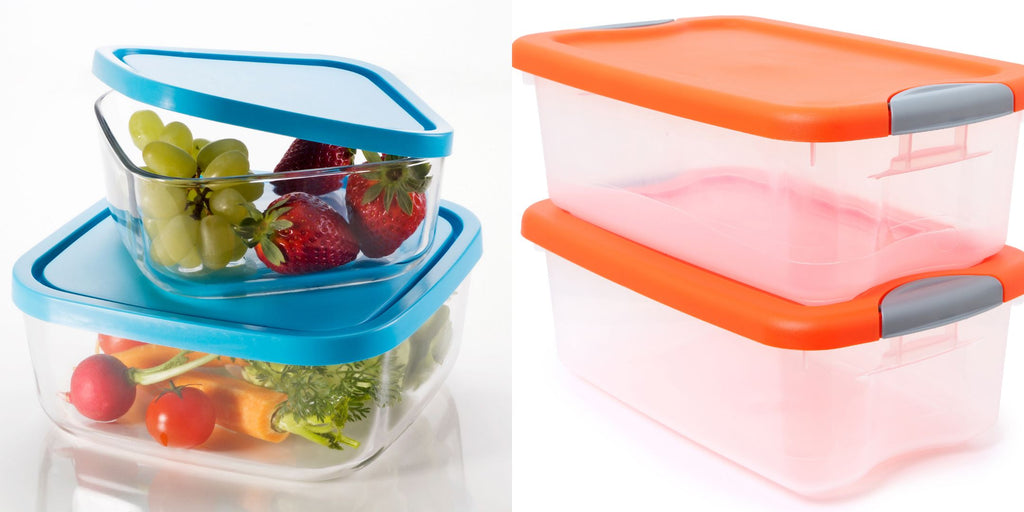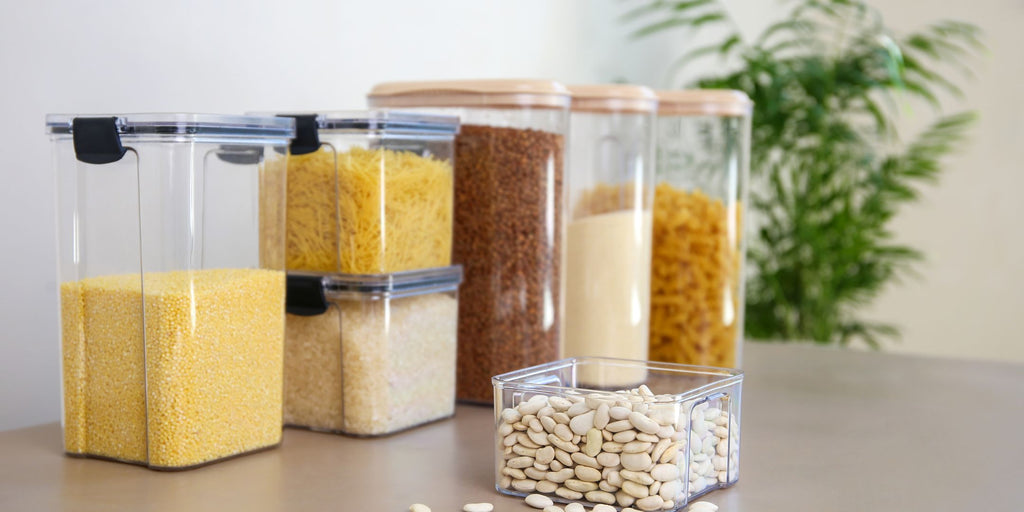When it comes to maintaining a well-organised kitchen and reducing food waste, choosing the right food storage containers is paramount. The market is brimming with various options, each claiming to be the best for your needs.
However, selecting the ideal food storage containers requires a bit of consideration to ensure they serve your purposes effectively.
In this quick guide, we'll explore the essential factors to consider when buying food storage containers. Let's begin.
Features to Look for When Buying Food Storage Containers
Material
The material of a food storage container plays a significant role in its functionality. Common materials include non-plastic food storage containers, glass, stainless steel, etc. Let's look at the features of each material separately:
|
Material |
Features |
|
Plastic |
Lightweight and affordable, available in various types including polypropylene and polyethylene. |
|
Glass |
Sturdy and non-toxic, making them an eco-friendly choice. |
|
Stainless Steel |
Known for durability, suitable for both hot and cold foods. |
|
Silicone |
Flexible and heat-resistant, excellent for baking and freezing. |
Size and Capacity
Consider the volume of food you intend to store. Smaller containers are perfect for single servings, while larger ones suit family-sized portions. Look for a range of sizes to accommodate various needs. However, make sure your chosen size also fits your pantry or fridge.
Shape
The shape of the container can affect its storage efficiency. Rectangular or square containers often stack neatly, while round ones are ideal for liquids and mixing.
Colour
Although the colour is largely a matter of personal preference, clear or translucent containers are handy for quickly identifying contents.
Type of Lid
Lid types vary, including snap-on, screw-on, and hinged. Choose a lid that seals securely to prevent spills and maintain freshness.
Airtight Seal
An airtight seal is vital to preserve food quality. Look for containers with silicone gaskets or locking mechanisms that create a tight seal.
Freezer or Microwave Safety
Check if the containers are safe for both the freezer and microwave. Not all materials can withstand extreme temperatures, so ensure they suit your intended use.
Glass vs. Plastic Food Container: Which One Should You Choose?

Glass Food Containers
Pros:
- Durability. Glass containers are sturdy and less prone to scratching and staining compared to plastic.
- Sustainability. They are environmentally friendly, as glass is recyclable and poses fewer long-term environmental concerns.
- Safety. Glass is non-toxic and does not leach harmful chemicals into your food.
- Transparency. You can easily see the contents of glass containers, making it simple to identify what's inside.
- Heat Resistance. Glass can withstand high temperatures, making it suitable for oven use.
Cons:
- Weight. They are heavier than plastic, which can make them less convenient for on-the-go use.
- Fragility. Glass containers can break or shatter when dropped, posing a safety risk.
- Cost. They tend to be more expensive than plastic options.
Plastic Food Containers
Pros:
- Lightweight. Plastic containers are lightweight and easy to transport.
- Affordability. They are typically more budget-friendly than glass containers.
- Versatility. Plastic containers come in various shapes and sizes, suitable for different storage needs.
- Durability. They are less likely to break when dropped, making them a practical choice for busy households.
Cons:
- Environmental Concerns. Many plastic containers are not recyclable or may release harmful chemicals over time, contributing to environmental issues.
- Staining and Odor Retention. Plastic can stain and retain odors, which can be off-putting.
- Safety. Some plastics may leach potentially harmful chemicals into your food, especially when exposed to high temperatures.
Best Food Containers for Dry Goods

1. Airtight Plastic Containers
Airtight plastic containers come in various sizes, are stackable, and offer a tight seal that keeps moisture out and freshness in.
2. Glass Jars
Glass jars, like mason jars or resealable glass containers, are transparent, allowing you to see the contents easily. Glass is also non-reactive, so it won't absorb or impart flavours to your dry goods. It's also a sustainable option as glass can be recycled.
3. Metal Tins
Metal tins, such as those with airtight lids, are great for keeping dry goods fresh. They are especially useful for items like loose tea leaves, coffee, or baking ingredients.
4. Acrylic Canisters
Acrylic canisters or containers offer a clear view of your dry goods and can be an attractive addition to your pantry. They are lightweight and come in various shapes and sizes.
5. Silicone Food Storage Bags
Silicone food storage bags are a more eco-friendly option. They are reusable and airtight, which helps keep dry goods fresh. They are suitable for items like grains, dried fruits, and snacks.
6. Vacuum Sealed Bags
Vacuum-sealed bags or containers are ideal for long-term storage of dry goods. They remove air from the container, prolonging the shelf life of your items. These are particularly useful for bulk purchases or long-term storage of rice, pasta, and dried beans.
7. Baskets and Bins
For a more organised pantry, consider using baskets or bins. These can be used in conjunction with other containers to group similar items together and make it easier to access your dry goods.
Read More: How to Deep Clean and Organise Your Refrigerator
Are Plastic Food Containers Safe?
Plastic containers have received their fair share of scrutiny regarding safety. While many plastics are considered safe for food storage, it's crucial to be aware of potential issues, such as leaching chemicals. To ensure safety, opt for containers labelled BPA-free and avoid heating plastic containers in the microwave.
Food Container Storage Tips
To maximise the longevity of your food, follow these tips:
- Label containers with dates to monitor freshness.
- Keep a variety of sizes to accommodate different portions.
- Store like items together to maintain an organised kitchen.
- Stack containers to save space.
Read More: DO NOT Overload Your Refrigerator (Here's Why)
Food Storage Cleaning Tips
Proper cleaning is essential for food storage container hygiene. Follow these steps:
- Rinse containers as soon as possible to prevent stains.
- Use mild dish soap and a soft sponge to avoid scratching.
- For stubborn odours, use a baking soda and water solution or white vinegar.
- Air dry containers to prevent moisture retention.
Looking for Versatile Food Containers for Your Home?
A combination of various container types may be the most effective strategy to ensure your food stays fresh, your pantry or refrigerator remains well-organised, and your environmental footprint is minimised. If you're ready to level up your food storage game, check out Megafurniture's collection of food storage solutions in Singapore for the best prices!








